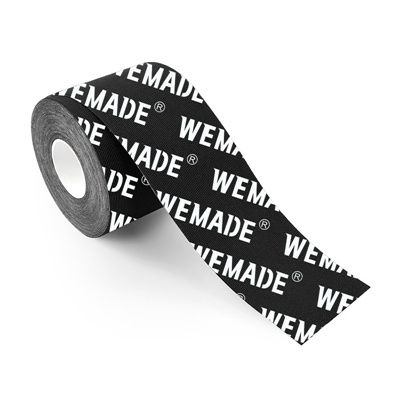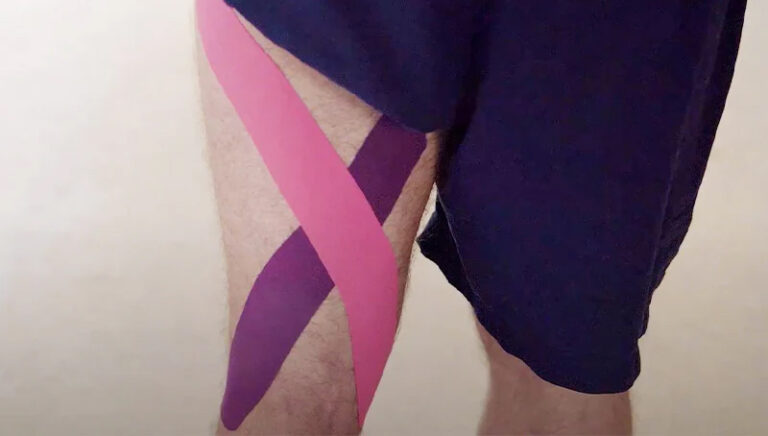We often see athletes wearing tape bandage around their ankles, wrists, and knees, or colorful patches in various patterns on their thighs, arms, and shoulders.
These patches, the white ones are called tape bandage, and the colored ones are kinesthetic patches.
These patches, supplemented by the technique of sports patching, can help the injured athletes continue to struggle, even if they are injured in battle.
Full game and devil training day and night.
The most common of these are the following two techniques: traditional sports taping and kinesthetic taping.

tape bandage:Traditional sports taping
Protecting the human body from strain caused by excessive twisting of the joints is the main task of sports taping.
White stickers are the most frequently mentioned protagonists, and many professional teams will call them “foot kicks”.
In this technique, various props of different specifications are often mixed and used, such as heavy-duty elastic stickers, light-weight elastic stickers, skin films, lace pads, pressure sheets and so on.
1. The white sticker itself is inelastic, and this feature is most often used to limit the joint angle.
2. The viscosity is poor, it is not easy to fit with the skin, and it is easy to fall off due to sweat.
Therefore, the tape bandage must be stacked one by one in order to weave a special protective gear that perfectly fits the limbs.
3. tape bandage has a strong sense of security and restraint, while sacrificing part of the comfort. The feeling of kaka will not make you want to continue to wrap it while resting
These features make the sports tape almost a single-use, disposable, disposable, customized protective device.
Kinesio Taping
The intramuscular effect patch is more widely used, and can be applied to the skin, muscles, ligaments, joints, and fascia, and can be used in competitive sports, leisure activities, clinical treatment, and daily life.
1. The intramuscular effect has good extensibility, which also means less restrictive force in exchange for more comfort.
2. tape bandage has a small resilience, and with different directions of the patch, it can produce many different effects on the intramuscular effect: it can stimulate muscle contraction, relax the tight myofascia, and also promote subcutaneous circulation to achieve unexpected results. Swelling effect.
3. However, the overlapping parts of each patch will slightly affect the effect of resilience.
The more layers of tape bandage, the more effective the skin-lifting effect will be greatly reduced, so the lighter, cleaner and neater the patch will often have. better efficacy.
4. The special adhesive can make the patch fit the skin effectively and closely, and it is less likely to fall off due to physical activity.
In the case of normal non-vigorous exercise, with proper maintenance, the patch can stay on the body for about two or three days.
In addition to competitive sports, wearing it in daily life can also relieve occupational pain at work and back pain from poor posture.
The biggest difference between the white sticker and the intramuscular effect sticker is that the white sticker is better at limiting joints, protecting ligaments, and improving defense.
The intramuscular effect is more widely used to adjust muscle tone, correct posture, promote soft tissue repair, and subcutaneous drainage.
There is no difference between the two types of taping effects and methods. In the most ideal situation, the two types of taping can effectively improve various sports injuries.
The musculoskeletal tape can be used to improve the state of the soft tissue first, and then the white tape can be used to strengthen the outer layer to limit the angle of the joint to protect the injured tendon and ligament.
The most common combinations are as follows
Forearm & Wrist
Intramuscular Effect + White Paste Compound Taping Method
Many movements require repeated use of palms to support the ground, such as push-ups, wrong shoulder pushes, chest pushes, handstands, etc., and you will feel uncomfortable when your wrists are excessively dorsiflexed.
At this time, it is very suitable to use the tape bandage to relax the shortened wrist extensor muscle group, and then use the white tape to limit the angle of the wrist.
Thigh & Knee
Intramuscular effect + white sticker compound taping method
The common collocation of the knee is to apply tape bandage to the jumping knee.
First, use the kinesthetic tape to relax the quadriceps femoral muscle, then use the white tape to make the patella band to press on the patellar tendon, and finally use the light elastic tape to wrap it around the knee joint to prevent it.
tape bandage come off easily. In addition, white stickers are also very suitable for protecting the ligaments around the knee joint.
Calf & Ankle
Intramuscular Effect + White Taping Compound Taping Method
The most classic match is ankle sprain, which is also one of the sticking methods that basketball players must learn.
In most cases, the tape bandage can be used to promote the peroneal muscle to maintain the ankle joint valgus, and then use the white sticker on the outer layer to execute the ankle.
Tape to limit the varus angle of the joint to protect the surrounding ligaments.
Wikipedia's explanation of tape bandage




